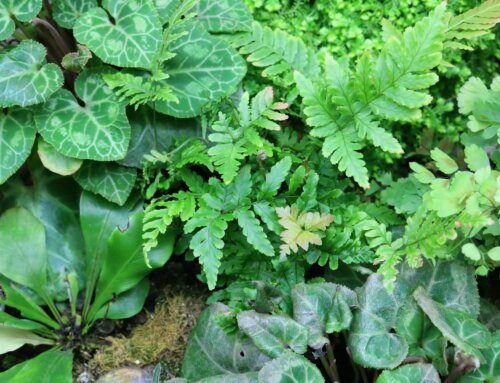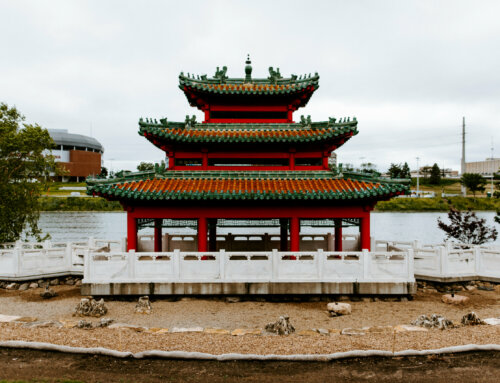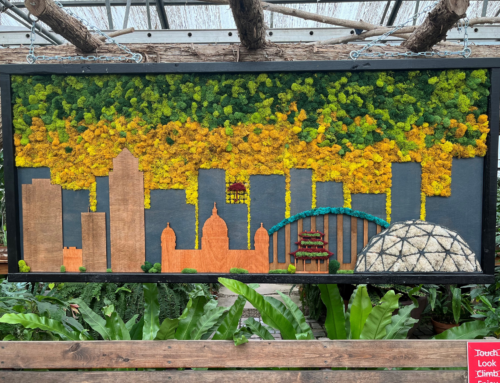Fall Gardening with Senior Horticulturist Leslie Hunter
Learn how to protect your gardens—and your houseplants— from the cold temperatures while encouraging the best possible spring blooms.
Roses
At this point in the season, you can leave your roses alone and allow the blooms to form rose hips while growth slows. Typically, we do not cut back roses at the Botanical Garden until the spring.

If you have grafted roses, such as hybrid tea roses or David Austin English Roses, insulate the grafted union. If you have long canes that may whip around, you can tie those up to decrease the canes from drying out and being damaged.
After a few hard frosts, we will insulate the Botanical Garden’s rose crowns with compost as a precaution (even our hardy roses). You can also use mowed leaves or mulch to insulate and protect your roses if you choose.
Houseplants
Cooler temperatures mean it is time to bring in houseplants that have been outside. Don’t forget to clean your pots and plants to prevent bringing bugs inside. I like to soak the pots in water with dish soap (I recommend Dawn) and gently wash foliage with soap and rinse.
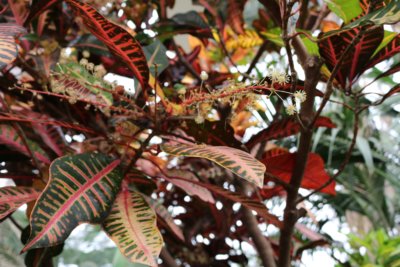
This is also a good time to repot and maintain your plants. Prune your plants back lightly if needed to make them more manageable for display in your home (or just to get them in the door!) and then refresh with new soil.
Keep in mind that zonal or scented geraniums growth will slow in winter, so be careful not to overwater them. You can trim them during this time, but don’t cut way back.
Lastly, to promote growth indoors, make sure you have an appropriate light source and locate somewhere that is not too hot or too cold. Having some air circulation is ideal but avoid drafty areas, such as by exterior doors that are opened often.
Vegetable Beds
To prep your vegeable garden bed for winter, clean out plant debris to minimize disease issues that will affect the soil. You can top dress with one or two inches of straw or compost that will be worked into the soil in the spring to give your garden a powerful initial boost. Alternatively, you can also add mulched leaves for overwintering.
Perennials
We recommend letting your plants overwinter in their current state to provide critical habitat for insects and animals as well as offering winter interest. Leaving dead foliage intact also provides protection for the crown of the plant.
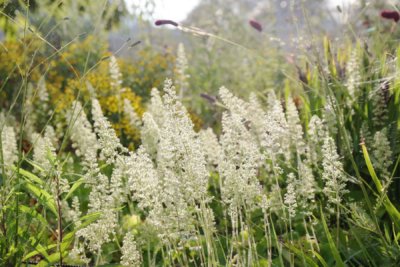
However, if you won’t have time for spring clean-up and must do it in fall, wait for a freeze so the foliage is dead before cutting it back.
You can either top dress perennials with compost now or in the spring. Adding it in fall gives time for it to work in over the winter months, but it will be easier to spread in spring after everything is cut back. Do whichever works best for you!
Spring Bulbs
Yes, now is the time to plant them!
Bulbs are a self-contained environment. They have everything they need to grow and don’t use much of those resources until spring, so there’s no need to do anything when planting them.
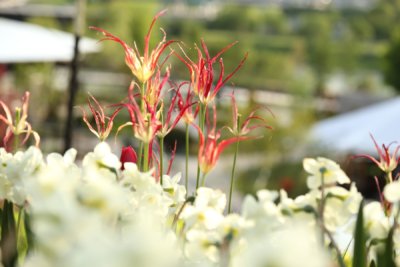
If you have perennial bulbs, it’s helpful to fertilize in spring to keep them healthy. You can also add a top-dressing of compost now that will work its way into the soil by spring.
We are planting 19,040 bulbs at the Garden this fall, including more than 12,000 tulips! Be on the lookout for an amazing display come spring.
(P.S. Spring bulbs are still available for purchase online! Even better, they are all 50% off while supplies last.)

